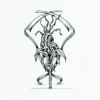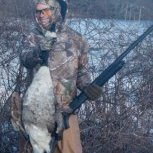-
Similar Content
-
By Raul2145
Hi Everyone,
It is current the last week for regular season in upstate NY. Living the life working and being a full time student, I have some time off this week and would like to take a ride upstate to do a gun hunt. Never have I hunted public land in the areas 3 G, F, or N and was looking for some recommendations and help! I had used the DEC info locator and found California Hill and thought I might go there. Is there any recommendations on areas to go to in any of the wmu’s? Or on California? Any help would be really appreciated!!
best of holiday wishes!
-
By Toth9050
I'm new to the area and looking for some places to hunt the next few weekends through bow/muzzleloader season. I'm living in New Paltz, and the place that seems the most promising to me so far is Vernooy Kill State forrest, and north into Sundown. Has anyone had any luck in these areas? Is there anywhere better in the area I should check out? Any info is welcome
-
By Raul2145
Hi Everyone,
My name is Raul and I am a new hunter! I've been hunting public land for now, but have been suffering. I've done 2 10 hour sits at Kings Park and 3 10 hour sits at Rocky Point and haven't seen one deer. I use a treestand and use scent blocker. I also get there super early in the morning. I need help! I plan to go again this friday. I scouted Rocky point after the first day and always see sign and I try to hunt the areas, but no success. I hunt around 42 and 36 I think. If someone wants the exact spot I can send them it on a map. I am really just looking for help in any areas and everything. I have put so much effort yet all i want is to just see one that will keep moral up. Any help is really appreciated!
-
By C-H Brad
We will be publishing the new list of available hunting leases on Monday, March 2, 2020 at 7:30 AM on our website www.cottonhanlon.com
Cotton-Hanlon is a private timber company that owns land in NY and PA (sorry all our land in PA is currently leased). We have been leasing land since the fall of 1970. You will be dealing directly with the us, no third parties.
Still working on the list but it looks like we'll have woodlots available in the following counties in NY: Broome, Cayuga, Chemung, Chenango, Cortland, Oswego, Schuyler, Tioga and Tompkins.
Make sure to check it out first thing that morning for the best choices.
Thanks, Bob
-
By John Barton
Wondering if anyone has an extra DMP tag for 4W.
Long shot I know and would be happy to get a 1C to exchange. Or trade my turkey tag. Wasn't sure where I would be hunting and never got a deer yet.
-
-
Recently Browsing 0 members
No registered users viewing this page.






Recommended Posts
Join the conversation
You can post now and register later. If you have an account, sign in now to post with your account.